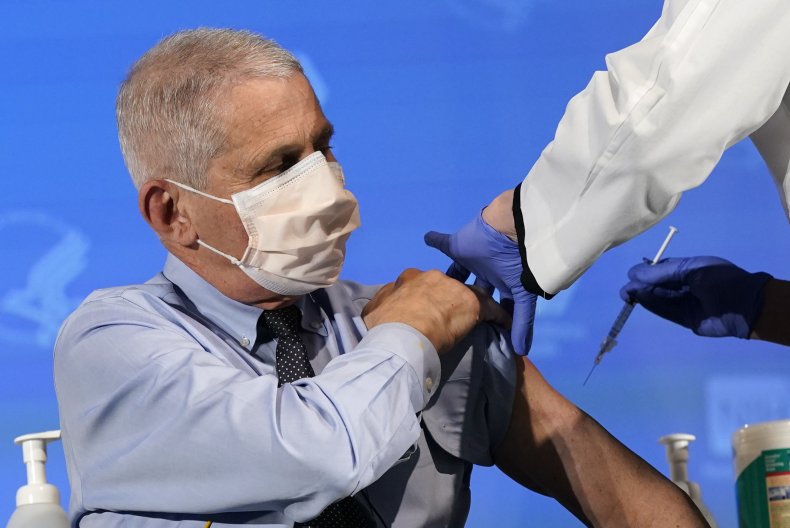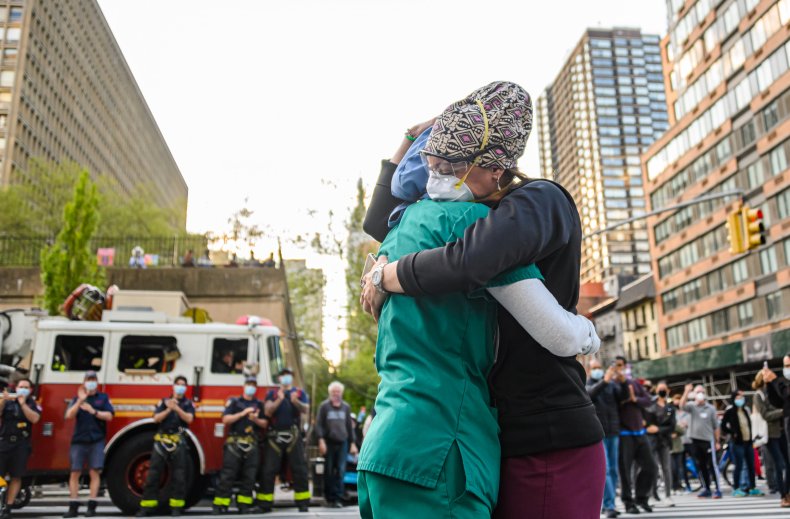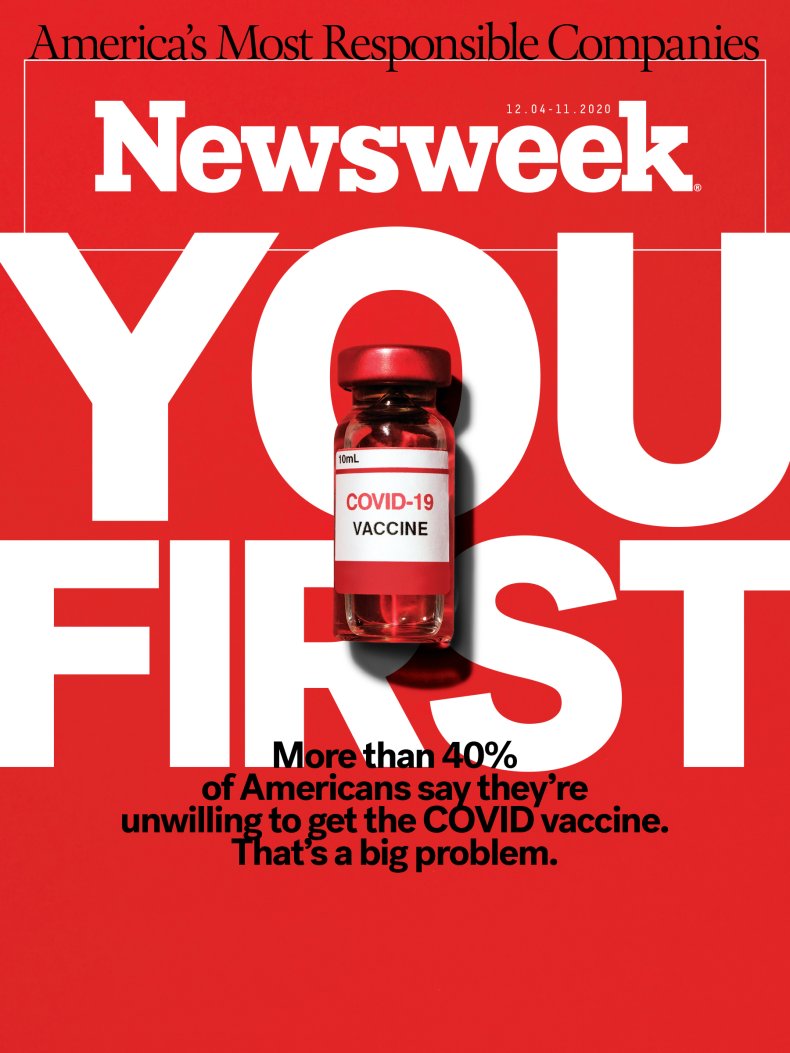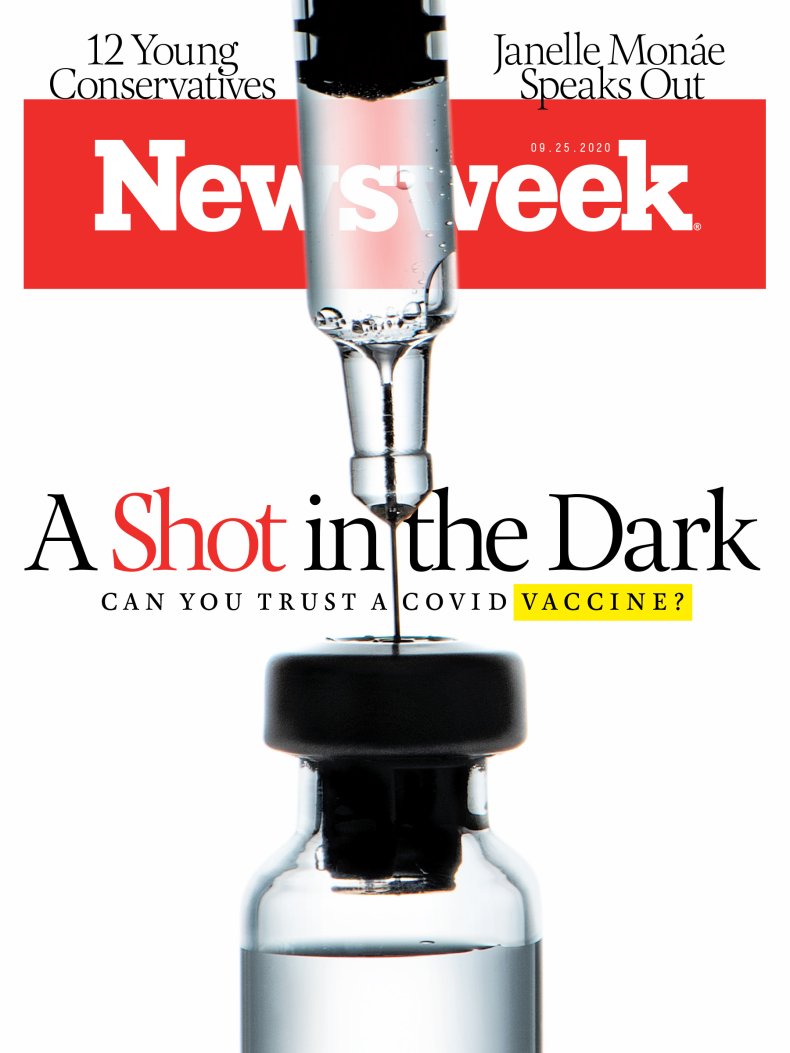[ad_1]

Patrick Semansky-Pool/Getty Images
As more than 25 million Americans bask in the presumed protection of at least one dose of a COVID-19 vaccine, Dr. Anthony Fauci has hit the news shows with visions of herd immunity by the end of summer. That’s the rosy scenario we’re all desperate to believe in. An alternate scenario is starting to appear increasingly likely, though—one in which we could still be battling the pandemic well into 2022.
This view starts with our current, tenuous situation: case rates are frighteningly high, few people have immunity and the vaccine rollout is grindingly slow. The virus, meanwhile, is changing. It has already mutated into versions that spread more quickly, may kill more efficiently and threaten to undermine the effectiveness of vaccines.
The nightmare scenario: the virus mutates into a variant that renders current vaccines weakened or obsolete before the rollout reaches the 150 million or so people needed to achieve herd immunity, which would halt the virus in its tracks.
If we’re really unlucky, mutated versions of SARS-CoV-2 already circulating are enough to cause such a setback. That’s what some studies suggest—though these are preliminary, and it could take weeks or months of collecting patient data to clearly demonstrate what any particular variant is doing. “All indications are that these variants of the virus could be a significant challenge to the vaccine,” says Michael Osterholm, the straight-talking infectious disease expert at the University of Minnesota who was a key member of Joe Biden’s pre-inauguration COVID advisory board. “Without a doubt that’s potentially the most overwhelming problem we face.”
The evolving threat
Under Donald Trump, the U.S. gave short shrift to low-tech methods of keeping infections under control—mainly mask wearing and social distancing—and bet all its chips on vaccines. A few months ago, when it became clear that the Pfizer and Moderna vaccines protect more than 90 percent of those inoculated, that bet was looking like a winner.
But the vaccine rollout also got short shrift, and now it is troubled. Ongoing bottlenecks in vaccine production and distribution, rampant distrust of vaccine safety, reluctance to mask up and take other basic precautions, and the spread of a much more transmissible, possibly more lethal version of the virus—all these things stand between us and normal life.
The first significant COVID-19 mutation was spotted in the U.K. in December. That variant appears to be more infectious, thanks to a change in its “spike protein”—the protrusions on the surface of the virus that help it latch onto a healthy cell. The U.K. variant spreads through populations up to 70 percent faster, according to public-health officials. That’s concerning enough, but more recent published studies have suggested that the variant may also be about 30 percent more likely to kill those it infects. Other faster-spreading variants have also been found in California and Ohio, among other places.
Dangerous mutations are popping up left and right in part because the COVID-19 case rate is so high. When the virus enters a person’s bloodstream, it creates billions of copies of itself in the victim’s cells. The essence of mutation is that some of those copies aren’t quite identical to the original. In the vast majority of cases, these random mutations have little effect on the virus, or even reduce its ability to infect and sicken. But given enough opportunities, a copy of the virus is bound to end up changed in a way that makes it more transmissible, deadlier, or able to beat the vaccine—or, in the worst-case scenario, all three.
With more than 25 million known cases in the U.S. and 100 million worldwide, the virus has a vast playground for trying new mutations. The more infected people, the more likely that a vaccine-defeating virus will pop up sometime soon.
The best chance of getting infection rates low enough to avoid that mutational disaster is a fast vaccine rollout. “Our challenge is how to get everybody vaccinated quickly enough to reduce the amount of virus out there and slow its ability to mutate,” says Eric Rosenberg, who heads Massachusetts General’s Clinical Microbiology Laboratory.

Photo by PATRICK T. FALLON/AFP via Getty Images/Getty
Buying time
Scientists’ biggest concern is the emergence of variants that can render the vaccine less effective. The first crop of those variants is already here: one first turned up in South Africa, another in Brazil, and a third in Washington State. The two vaccines approved in the U.S.—from Pfizer and Moderna—work by stimulating the body’s immune system to produce antibodies that primarily look for the spike protein on the virus. The altered spike proteins in the South Africa, Brazil and Washington variants seem to make them as much as ten times less recognizable to those antibodies, according to lab studies that have been posted, though not yet peer-reviewed. (These variants can probably also defeat the monoclonal-antibody therapies that have proven effective in reducing the severity of illness in COVID patients and may lead to false negative results in testing.)
Immune responses are complex and not fully understood. It’s possible that contrary to the lab findings many or even most vaccinated people will end up with a variety of antibodies and other immune defenses, some of which won’t be fooled by the mutations of the spike protein that have emerged so far. That’s a reasonable expectation, notes Sharone Green, a physician and researcher specializing in infectious disease at the University of Massachusetts Medical School. “The variants are concerning, but so far there’s nothing in the peer-reviewed literature that says they make the vaccine less effective,” she says.
Even if we luck out with the variants that have already arisen, more are inevitably on the way. “We can expect strains that have further mutated into something that better evades the immune response from the vaccine,” says Anthony Harris, a physician who heads clinical operations at Workcare, a company that helps organizations reduce employee infection risks. The annual flu vaccine, for example, is typically only 50-to-70-percent effective in large part because the influenza viruses are so good at continually and rapidly mutating. The COVID-19 virus is pretty good at mutating, too: The U.K. and South African variants, both of which have reached the U.S., carry eight and nine mutations, respectively, to the spike protein. While there are no specific number or type of mutations to the protein needed to defeat the vaccine, any combination of mutations to the protein raises the threat.
The vaccines can win this race, even with resistant variants already in circulation. To do so, it will have to bring case rates way down before vaccine-defeating variants have a chance to spread widely. If the case rates drop enough, then limited outbreaks of vaccine-resistant variants could be controlled with quarantines, lockdowns, and other standard containment efforts. In addition, low case rates provide the virus with fewer opportunities to develop additional mutations that could cause even bigger problems.
Vaccine developers, meanwhile, would get the time they need to come up with versions that are effective against the variants—a process that might take as little as three months from start to rollout, if the tweaks to the vaccine are minor enough to win FDA approval without large clinical trials. “We can keep adapting the vaccine to chase the virus as it mutates,” says Osterholm. Pfizer and Moderna have already announced fast-moving efforts to produce booster shots for vaccinated people that will improve their immunity to the known variants, and they’d likely be able to do the same for future variants. There are also proposals to deliver a third shot of the existing vaccines, which might raise resistance enough to defeat the variants.
But if virus-evading mutations get around more quickly than the initial vaccines do, we’ll essentially have to start from scratch in vaccinating the population, likely crushing hopes of defeating the pandemic this year.
A troubled rollout
The next month or two may determine whether the vaccine or the mutations win out. But the race might not have been so tight if the initial weeks of the rollout hadn’t been plagued by confusion and inefficiency.
For all it did to spur vaccine development, the Trump administration failed to put together a strong centralized plan for getting shots into people’s arms. Instead, it left the details to states, few of which have the public-health infrastructure in place to efficiently handle a high-speed mass vaccination effort. It hasn’t helped that, according to surveys, roughly half of Americans prefer to hold off on getting vaccinated because of mostly baseless safety concerns. Vaccine-hesitancy rates in communities of color run as high as 89 percent, according to a survey conducted by The Boston Globe and Suffolk University. “Hesitancy is our biggest point of failure,” says Harris.
The results aren’t surprising: A month into the vaccination effort, most states have struggled simply to administer half the doses they were given. So far, 47 million doses have been shipped to the states, but only 25 million have been administered. A mere 3 million people have received a full two doses. Meanwhile, more than 3,000 Americans a day are dying of COVID-19, and the rampant infection rate enormously increases the risk that a more dangerous version of the virus will emerge. “Mutation is a lottery,” says Rosenberg. “The more tickets the virus gets to buy, the higher the likelihood it will win.”
To add to the worry, the delay between the first and second doses is about to leave tens of millions of people partially vaccinated. That, too, can increase the risk of a dangerous mutation. Just as taking an incomplete course of antibiotics can help produce antibiotic-resistant bacteria by wiping out the weak bacteria and favoring the strong ones, a big population of partial vaccines could nurture vaccine-resistant versions of the virus. That’s a risk even with two doses, if mutations make the vaccine less effective.

Noam Galai/Getty
Although the Biden administration is taking steps to fix the bungled vaccine rollout, it could be too little too late in terms of outracing mutations. Says Osterholm: “I think the next six-to-twelve weeks could be devastating, by far the worst of the pandemic.”
All these challenges threaten to indefinitely delay hitting herd immunity—the point at which a large-enough percentage of the population has achieved immunity, whether through vaccine or infection, to rob the virus of enough potential victims to continue spreading widely. Herd immunity would essentially mark the end of the crisis. In August, The New York Times was among the media outlets trumpeting a theory that the U.S. might already be close to herd immunity, and that New York City may have already achieved it. It hasn’t turned out that way. Fauci and other experts now warn that it will require vaccinating some 85 percent of the population. Unless things improve dramatically, hitting that mark before winter is starting to look like a longshot.
If we don’t get to herd immunity, or close to it, by late fall, we face the possibility of a significant third wave of the pandemic. That’s what happened in the influenza pandemic of 1918, which returned with a vengeance in 1919 to kill millions more around the world. A century ago there were no vaccines for the flu. But COVID-19 vaccines won’t quell the current pandemic if we can’t get it into enough people in time to head off a new wave or a resistant variant.
Stick with masks
There’s more we can do to avoid that dark scenario. Given the slow vaccine rollout, beating COVID-19 this year will likely depend on the same tools the world has relied on from the beginning of this pandemic: masks, social distancing, lockdowns, quarantines, testing and contact tracing. Slashing the current sky-high infection rate that way would buy time to get a bigger chunk of the population vaccinated and help contain mutations.
But a sizable portion of the U.S. population has never been on board with masks and distancing, and states by and large haven’t enacted the tough restrictions or set up the comprehensive testing and contact-tracing that have helped many other countries limit infection rates. There’s little reason to believe that will improve, and it might get worse.
One worry is that more people will shirk mask-wearing and social distancing under the mistaken belief that the vaccine is saving the day. “That would be a particularly big problem in the next few months, with such a small portion of the population getting vaccinated,” says Erica Shenoy, a physician-researcher and associate chief of infection control at Mass General. And even the vaccinated will need to remain masked and distanced, she adds, because experts fear that people who are vaccinated may still be able to infect others even if they can’t get sick themselves. That’s what sometimes happens with animals that are vaccinated against similar viruses, and it’s far too soon to know that won’t happen with the COVID-19 vaccine in humans.
The bottom line: There’s a good chance the pandemic will be with us into 2022. If so, the virus will by then have had plenty of opportunity to evolve into strains that the current vaccine can’t stop. But new versions of the vaccines adapted to these strains will be coming out. In addition, much of the population will likely have started to build up broader natural or vaccine-induced immunity to the virus that will at least lessen the impact of the new strains. Ultimately, COVID-19 is probably destined to end up much like the common cold or the flu. That’s typically how pandemics wind down. “We’ll all get reimmunized every year, problem solved,” says Rosenberg.
When that happens, the last thing the U.S. should do is try to put the whole thing behind it, says the University of Massachusetts’ Green. Instead, she says, the government needs to build on the experience. “We can be sure the next pandemic is going to happen, and it will be something new,” she says. “We weren’t prepared this time. But we can learn from it so we can be ready the next time.”
That’s a lesson worth heeding, even if Fauci’s optimistic forecast plays out.

Tetra Images/Getty

Emilija Manevska/Getty

4X-image/Getty
[ad_2]
Source link